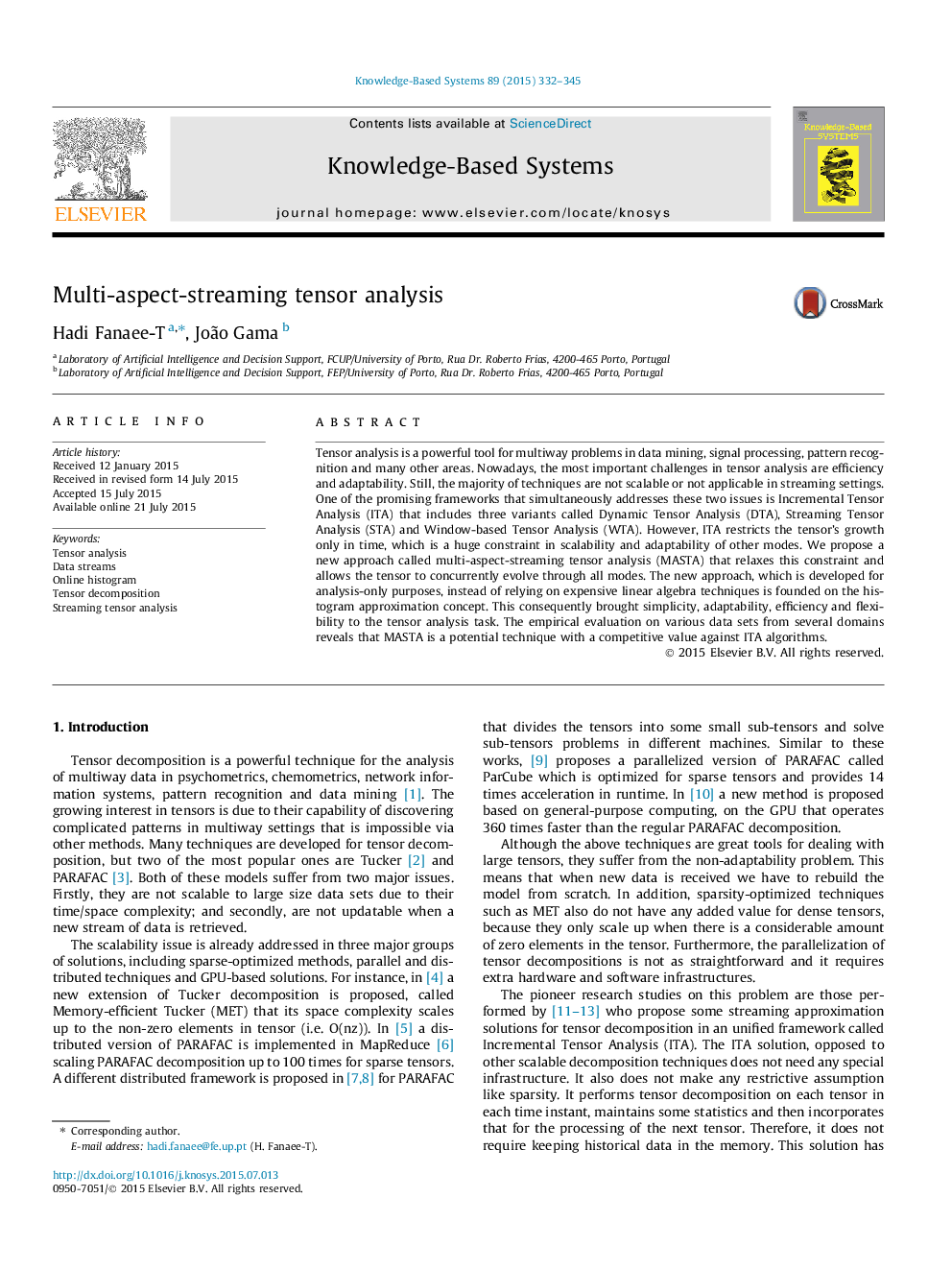| Article ID | Journal | Published Year | Pages | File Type |
|---|---|---|---|---|
| 402604 | Knowledge-Based Systems | 2015 | 14 Pages |
•We extend the application of histograms to tensor analysis problem.•We propose the first approach for multi-aspect-streaming tensor analysis (MASTA).•MASTA is space-efficient, fast and constant-time for update.•We evaluate the strengths and weaknesses of MASTA on 11 real-life data sets.•The proposed approach is useful for both streaming and scalable problems.
Tensor analysis is a powerful tool for multiway problems in data mining, signal processing, pattern recognition and many other areas. Nowadays, the most important challenges in tensor analysis are efficiency and adaptability. Still, the majority of techniques are not scalable or not applicable in streaming settings. One of the promising frameworks that simultaneously addresses these two issues is Incremental Tensor Analysis (ITA) that includes three variants called Dynamic Tensor Analysis (DTA), Streaming Tensor Analysis (STA) and Window-based Tensor Analysis (WTA). However, ITA restricts the tensor’s growth only in time, which is a huge constraint in scalability and adaptability of other modes. We propose a new approach called multi-aspect-streaming tensor analysis (MASTA) that relaxes this constraint and allows the tensor to concurrently evolve through all modes. The new approach, which is developed for analysis-only purposes, instead of relying on expensive linear algebra techniques is founded on the histogram approximation concept. This consequently brought simplicity, adaptability, efficiency and flexibility to the tensor analysis task. The empirical evaluation on various data sets from several domains reveals that MASTA is a potential technique with a competitive value against ITA algorithms.
